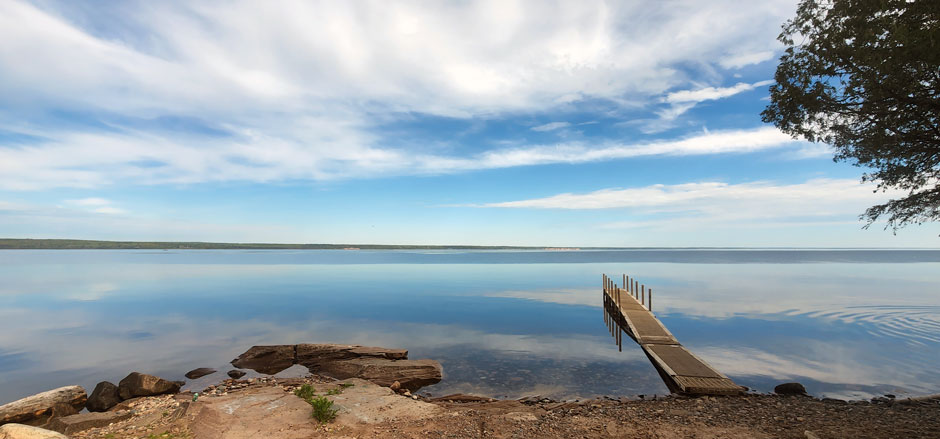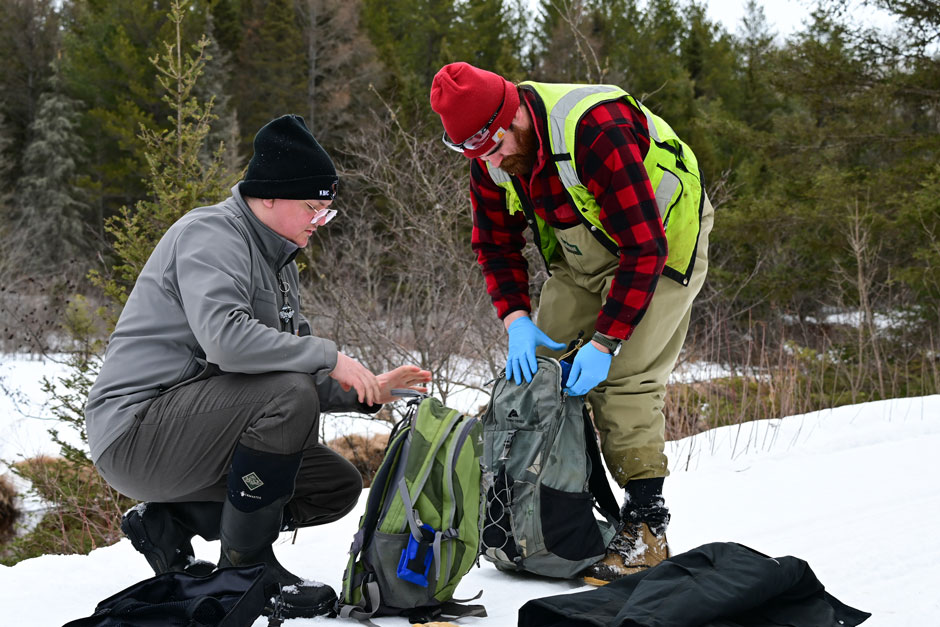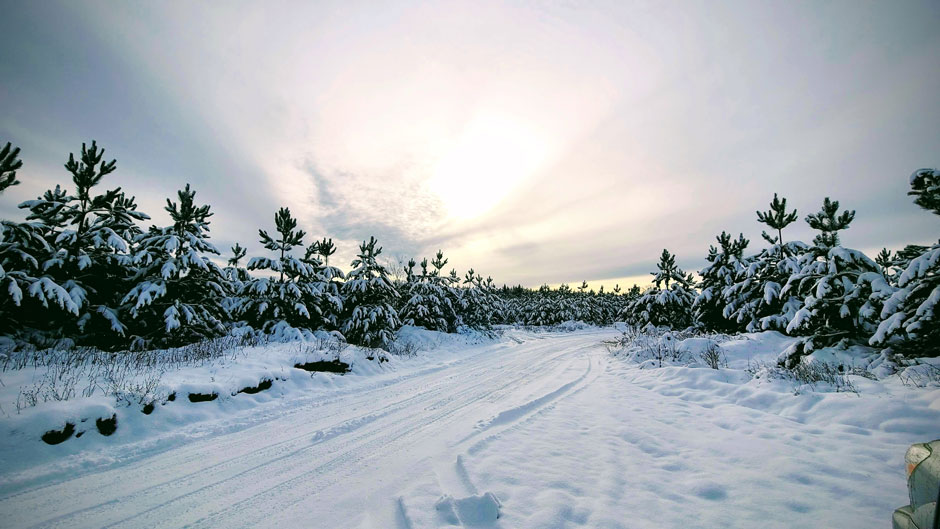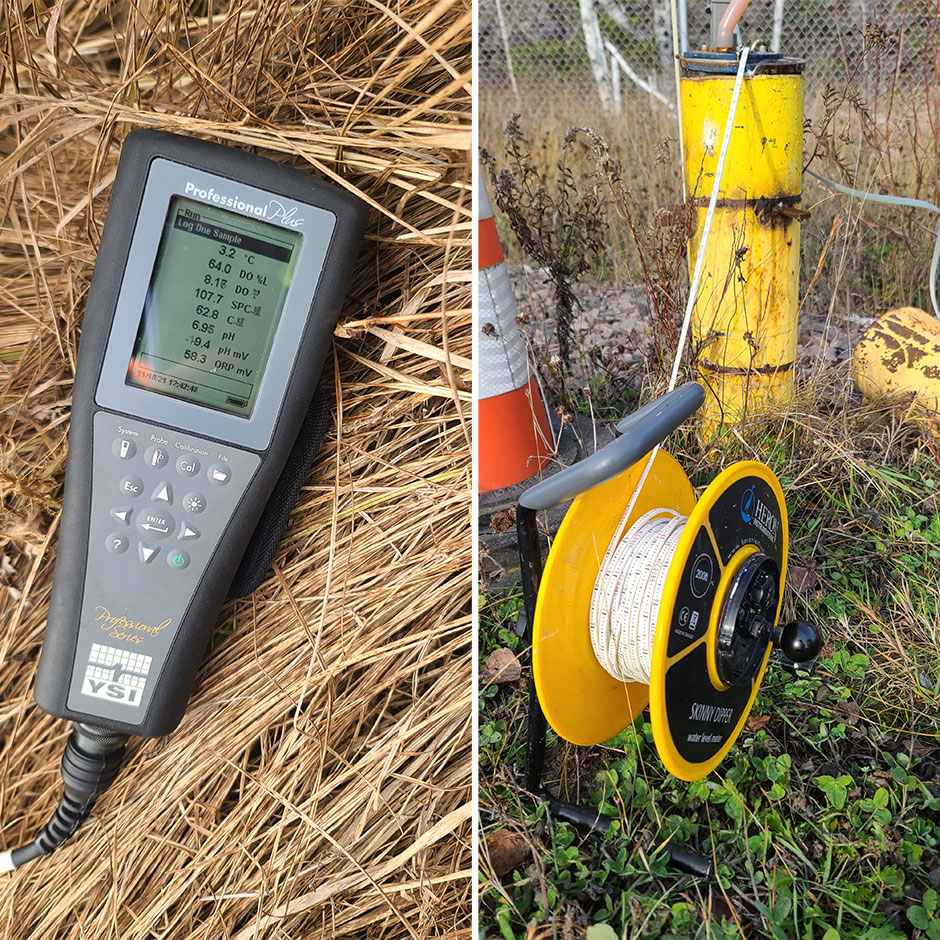Monitoring Water Pollution in Keweenaw Bay
 (Credit: Dylan Friisvall / Keweenaw Bay Indian Community)
(Credit: Dylan Friisvall / Keweenaw Bay Indian Community)As much as climate change and pollution impact current generations and present environmental conditions, the compounding damages will continue to wreak havoc against generations to come if no actions are taken. This idea is central for scientists who focus their research on monitoring, analyzing and responding to environmental data.
Researchers like Dylan Friisvall, the water quality technician for the Keweenaw Bay Indian Community (KBIC) Natural Resources Department (NRD), have dedicated their careers to monitoring pollution and water quality in order to protect resources for the future. “One of the best parts of my job is just being outdoors, it makes my day go by faster because I get to enjoy the fresh air, and help do my part in protecting the environment,” says Friisvall.
Friisvall states that it’s difficult to pin down a single primary responsibility considering there are so many factors at play. Still, he highlights, “I think the primary responsibility for me as a water quality tech would be preservation for generations to come.” He continues, “In the area I work in–I’m lucky enough to have such a pristine area where it’s almost not really touched by the pollution of humans and that, I would say, is the goal and responsibility–keeping it as natural and pure as possible.”
Friisvall works within the KBIC’S NRD, which shares its mission with many other Natural Resource Departments, “Making sure nature is as pollutant-free as possible for the next generation to enjoy.”
Why Water Pollution is Important
It’s easy to take advantage of water if you live in a community that consistently has access to clean water, but water pollution can make pure water toxic. Water pollution is not a niche concern of scientists but should instead be a concern for all people, regardless of proximity to water.
Friisvall explains, “Everything needs water and not just any water, pollutant/contaminant-free water to thrive. Even if we think about ourselves and wanting to make sure the water is clean and pure, as it is supposed to be, it helps out the whole ecosystem because not only do we consume the water, nature does so as well.”
Water pollution is a problem because everything needs water. Water pollution contaminates drinking water, negatively impacts plant and animal biodiversity and can permanently change an environment’s ecology.
The repercussions of water pollution are not isolated to aquatic organisms and instead ripples out from the site of contamination. The KBIC relies on both residential wells and Lake Superior for their water, and if groundwater is contaminated, the entire community’s health may be at risk.
Friisvall and other water quality technicians sample groundwater to ensure the well water is contaminant-free. The data gathered is then supplied to residents, followed by recommendations on how to treat their wells so that residents have a healthy drinking water supply.
If water quality is compromised, the entire community could be negatively impacted. “For compromised water quality, we would resample the site to double check our findings, check field notes to see what was going on in the area that day of sampling, since we note weather from prior days as that makes a difference in our results, and then investigate the area and find out what could have happened,” says Friisvall. He elaborates further, “For example, if it happens to be a flood event we would look upstream to see what could cause it and find the responsible party to see if it was intentional or accidental.”
One such incident in 2016 was a flooding event at a textile factory that created a white film that flooded the surrounding waterways. Thanks to the continuous sampling done through the Surface Water Monitoring (SWM) project, Friisvall explains, “We tested the site and streams as best we could and the incident created no harm or lasting effects, but it easily could have if it was anything else.”

Crew packing up sampling equipment into field bags (Credit: Lindsay Bean)
How Water Pollution Affects the Environment
Pollution can enter ecosystems in a multitude of ways and in various forms. Chemicals like mercury and PCBs enter water often in a liquid state as a form of runoff from industrial sites; plastic debris has plagued waterways and every stretch of the ocean for years; mining waste can also enter the water in solid forms.
Friisvall has spent a lot of time studying the impacts of mercury and its influence on groundwater. In particular, how mercury contamination resulting from the copper mining boom in the Keweenaw Peninsula has impacted groundwater health.
Toxins like mercury can harm fish health, increase mortality rates, and lower the production of an ecosystem. PCBs, mercury, and other harmful chemicals that are often a result of industrial runoff make fish sick, and chemicals traverse up through the food chain to humans that rely on fish as a resource.
Friisvall warns, “The mercury levels bio-accumulate which messes with the entire food web and gets built up as it goes up the food chain and when we finally consume the fish, we could be consuming a dangerous amount of mercury.”
For the KBIC, stamp sands, a solid form of pollution, started washing up on the shore in the 50s and have only multiplied in size. The copper found on the Keweenaw Peninsula was mined through a stamping method that led to the expulsion of the stamped material into Michigan’s waterways, impacting ecosystems like Buffalo Reef and communities residing along the shore.
The debris is sharp, black, and contains contaminants that quickly disbursed across the peninsula. The stamp sands are a particular problem for surrounding ecosystems. Friisvall explains, “Most plants cannot grow on it as it’s either too hot from the sun or too sharp it destroys the roots.”

Big Bay outside of Eagle Mine early in the morning prior to sampling that day (Credit: Dylan Friisvall)
How to Monitor Water Pollution
Living right along the shoreline, monitoring water pollution is essential for the KBIC NRD. As such, the tribe has put into place several years-long monitoring projects to keep watch for changes in water quality.
The oldest project, the SWM project, began in 2001 and continues to this day. Friisvall began his work as a water quality technician in 2015 and continues to be a part of the project now. Friisvall states that positions like his exist to keep the SWM project operational by sampling “local lakes & rivers for contaminations as well as other parameters.”
Friisvall explains that the project’s goal is to “help determine the health of the water system and if there is any pollution.” The program has been ongoing since 2001, and the long history of the project allows technicians to have “a pretty good guess on how a water system may be or is supposed to be in its natural state—before humans.”
The KBIC NRD is also interested in examining water temperature and depth trends for fish stocking purposes. Friisvall uses Onset Level Loggers in streams during the spring, summer, and fall to measure these parameters.
Climate change has led to unexpected temperature variability, which harms wildlife. Stocking cold water fish in a habitat that is too warm destroys population-stabilizing efforts. Recognizing the high and low points of the stream is important to note when stocking fish and can impact other critical water quality parameters.
Friisvall also states that they’ve been able to detect trends that reflect how the environment has shifted over time in the eyes of the community. He recalls, “In recent years there’s been more of a drought going on and water levels have been going down in the streams that I sample at, especially when I compare them to memories of my childhood growing up and fishing. Now, some of them seem to not have really any water in them when comparing them to the stories of my father’s childhood and his fathers.”
To track some of these parameters, Friisvall uses the YSI EXO1 Multi-parameter Water Quality Sonde to gather data in the field. Water quality sampling technology has changed a lot over the years, and equipment that allow for out-of-lab analysis are best for technicians like Friisvall. “I feel that the more I can use tech to get results than having to bring it to a lab then the fewer chances of human error and cross-contamination,” he explains.
Conclusion
Water pollution is an environmental factor that cannot be ignored. There is no escaping the necessity of access to water for all life, and monitoring and controlling pollution is one of the many ways of protecting a future for the planet. “The importance of monitoring is to protect and preserve for the future generations, not just for people but for all of nature,” Friisvall emphasizes.
For Friisvall, the best part of his job is being able to educate people on water quality and the dangers of pollution. He explains, “When people ask me questions and I can educate them and spread awareness—then, I hope it means they are more cautious when littering or learn to recycle more.”
He further warns that “pollution is a global problem not just a local problem, so we all have to pitch in to do our part.” The ties between urbanization and water pollution are well-examined and proven, and current practices must shift in order to protect the future.

Field photos of the YSI ProPlus (left) and Heron Skinny Dipper (right) (Credit: Dylan Friisvall)




Sara
November 15, 2022 at 9:16 am
Very informative post, thanks a lot for sharing this!